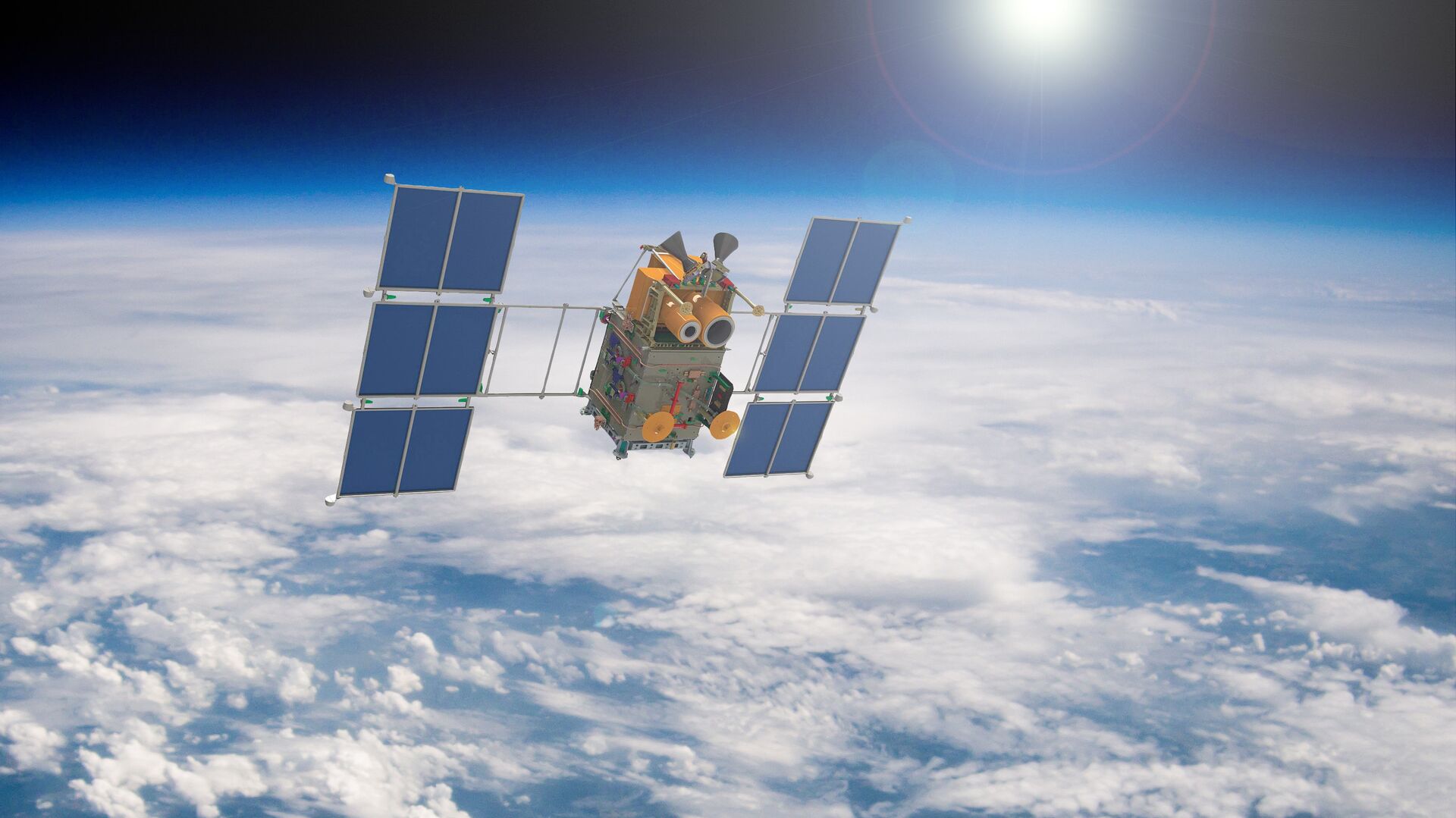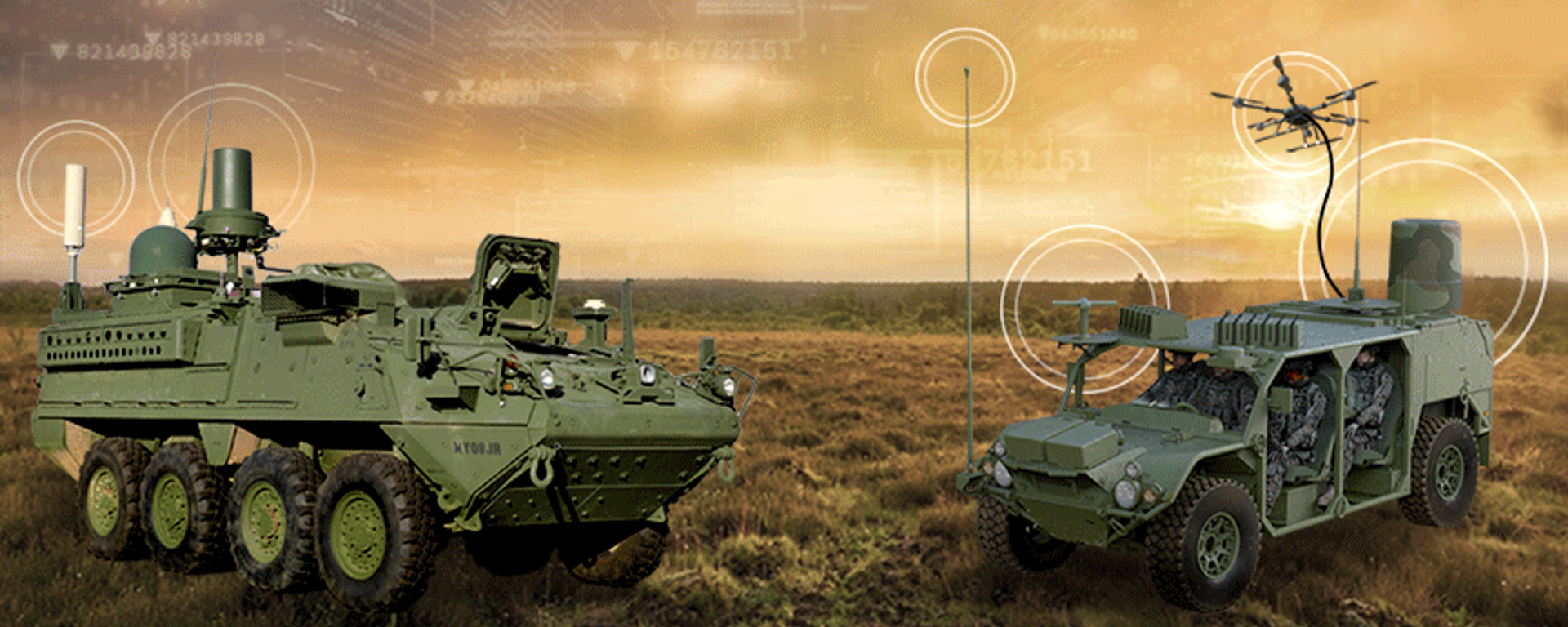https://sputnikglobe.com/20240721/russia-is-ready-to-counter-us-plans-for-satellite-jammers-in-space-1119451611.html
Russia Is Ready to Counter US Plans for ‘Satellite Jammers’ in Space
Russia Is Ready to Counter US Plans for ‘Satellite Jammers’ in Space
Sputnik International
The new “satellite jammers” the US intends to deploy in space to target Russian and Chinese satellites “is forcing Russia and China to develop similar technologies."
2024-07-21T20:04+0000
2024-07-21T20:04+0000
2024-07-21T20:04+0000
military
us
bruce gagnon
alexander mikhailov
russia
space
space weapons
https://cdn1.img.sputnikglobe.com/img/107163/04/1071630487_0:0:2997:1685_1920x0_80_0_0_fa3666ed89fd657bd4997e6e0481b35d.jpg
According to him, these US jammers are “intended as offensive weapons” and got “nothing to do with defense whatsoever.”The United States development of this jammer tech, however, “is forcing Russia and China to develop similar technologies,” Gagnon added.Gagnon also observed that this development takes place as the US “refuses to have a treaty to ban weapons in space,” which effectively forced Russia, China and India to pursue the development of “kinetic energy anti-satellite weapons.”Meanwhile, Alexander Mikhailov, head of Russian think tank Bureau of Military-Political Analysis, argued that US move to deploy satellite jammers in space suggest that Washington’s previous attempt to establish a ground-based satellite jamming system was unsuccessful.He also noted that Russian electronic warfare systems are much more advanced than the ones developed by the US, and mentioned multiple reports about Russian systems successfully jamming Starlink satellite signals.Tirada 2-S, Mikhailov explained, is not only capable of suppressing satellite signals – it can also scramble communications and “create false narratives, not only jamming communication channels but deceiving those receiving satellite signals and the satellite in space that receives signals from Earth.”
https://sputnikglobe.com/20240521/why-us-opposes-efforts-to-keep-space-weapons-free-1118569943.html
https://sputnikglobe.com/20240514/ukraine-crisis-highlights-chasm-between-russian-us-electronic-warfare-capabilities-general-admits-1118424707.html
russia
Sputnik International
feedback@sputniknews.com
+74956456601
MIA „Rossiya Segodnya“
2024
News
en_EN
Sputnik International
feedback@sputniknews.com
+74956456601
MIA „Rossiya Segodnya“
Sputnik International
feedback@sputniknews.com
+74956456601
MIA „Rossiya Segodnya“
satellite jammers, us space weapons, weaponization of space, russia and china space development, what are the russian chinese electronic warfare capabilities
satellite jammers, us space weapons, weaponization of space, russia and china space development, what are the russian chinese electronic warfare capabilities
Russia Is Ready to Counter US Plans for ‘Satellite Jammers’ in Space
The new “satellite jammers” the US intends to deploy in space to target Russian and Chinese satellites are meant to deprive Moscow and Beijing of “command, control, communication and intelligence systems during times of conflict,” said Bruce Gagnon, coordinator at Global Network Against Weapons and Nuclear Power in Space.
According to him, these US jammers are “intended as offensive weapons” and got “nothing to do with defense whatsoever.”
The United States development of this jammer tech, however, “is forcing Russia and China to develop similar technologies,” Gagnon added.
“And in the case of Russia, I know they're developing ways to block these jammers, to counter these jammers,” he said. “So this is all leading to the rise or the increase or the growth of tensions, escalation of warfare capabilities and space.”
Gagnon also observed that this development takes place as the US “refuses to have a treaty to ban weapons in space,” which effectively forced Russia, China and India to pursue the development of “kinetic energy anti-satellite weapons.”
“For at least 25 years, Russia and China have gone to the United Nations General Assembly and introduced a treaty to prevent all weapons in space,” he lamented, noting that US and Israel “blocked this development of this treaty for more than 25 years” when it was brought to the Conference on Disarmament in Geneva.
Meanwhile, Alexander Mikhailov, head of Russian think tank Bureau of Military-Political Analysis, argued that US move to deploy satellite jammers in space suggest that Washington’s previous attempt to establish a ground-based satellite jamming system was unsuccessful.
Not only did that previous scheme required considerable investments into new jamming facilities on the ground, but the system that “the Americans previously touted as a tested, effective system that can suppress any satellite signal and would thus be able to blind or silence Russian and Chinese satellites – it turned out that this system does not work,” Mikhailov observed.
He also noted that Russian electronic warfare systems are much more advanced than the ones developed by the US, and mentioned multiple reports about Russian systems
successfully jamming Starlink satellite signals.
He specifically mentioned the Tirada 2-S systems that “successfully jam satellite communication signals and ‘blind’ the units covered in Starlink satellite dishes.”
Tirada 2-S, Mikhailov explained, is not only capable of suppressing satellite signals – it can also scramble communications and “create false narratives, not only jamming communication channels but deceiving those receiving satellite signals and the satellite in space that receives signals from Earth.”




